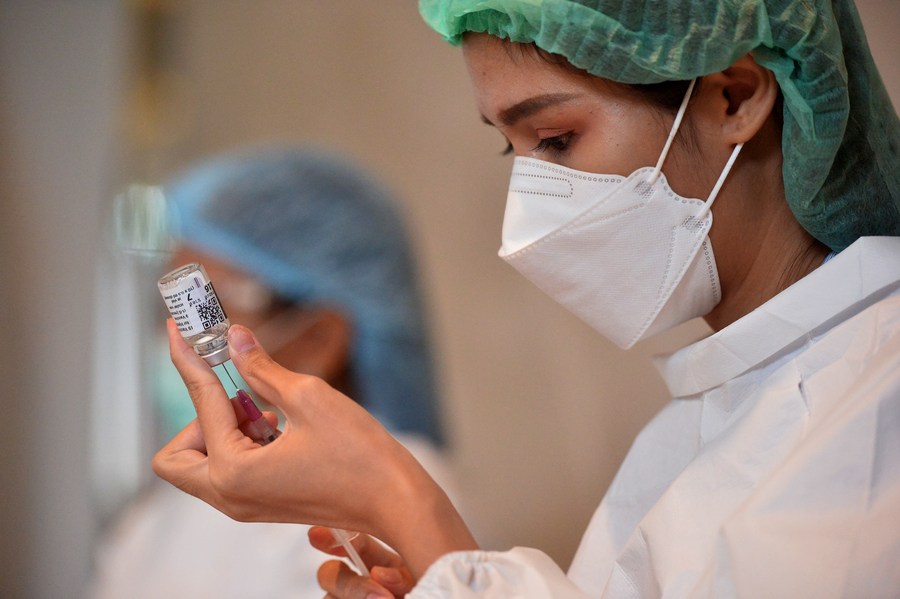Scientists rule out man-made origin of COVID-19

A health worker prepares a dose of the COVID-19 vaccine in Bangkok, Thailand, July 9, 2021. (Xinhua/Rachen Sageamsak)
BEIJING, July 17 (Xinhua) -- The SARS-CoV-2, the virus that causes COVID-19, can only be the product of multi-step natural selection; hence, SARS-CoV-2 is unlikely to have had evolved in a market in a big city and even less likely to have been created in a laboratory, says a scientific article published Friday.
The article, titled "On the origin of SARS-CoV-2 -- The blind watchmaker argument," was published in the latest issue of the journal Science China: Life Sciences. It was authored by 22 scientists working with universities and hospitals in China, or with institutions affiliated to the Chinese Academy of Sciences.
According to its first and corresponding author, professor Wu Chung-I with the School of Life Sciences at Sun Yat-sen University, the evolution of highly adaptive traits is generally a gradual process driven by natural selection. As Richard Dawkins stated succinctly in "The Blind watchmaker": If natural selection is a watchmaker, it could only be a blind one who works step by step, each time selecting some slight improvements from random tinkering.
"A species that perfectly adapts to its environment is not created all at once, but is the culmination of a series of small improvements from a large number of random mutations in a long time. SARS-CoV-2, as a 'perfect' virus, must be the product of natural selection as nobody could know in advance how to create a virus that perfectly adapts to humans," said Wu.
He compared the process to the mobile phone marketing -- Even the most skilled electronic laboratory could not have leaked a design that leads to the world's most popular mobile phone in one attempt. "The perfect product must be based on market testing and repeated adjustments."
A study on mice infection of SARS-CoV-2 proves that point. The study found that mice cannot be infected with the novel coronavirus, but scientists have found SARS-CoV-2 strains that could infect mice through artificial selection. Even so, these artificially screened strains could not cause a similarly vast outbreak in the mouse population.
"By our reasoning, the virus had gone through repeated mutual infections between wild animals and people before the first reported outbreak of COVID-19 and, gradually, accumulated mutations adapted to the human body," said Wu. "In the process of human infection, the virus experienced repeated defeat until it evolved into the current strains that are extremely suited to mass transmission," he added.
A research team led by Wu had proposed an incremental evolution model of SARS-CoV-2, in which the virus is believed to have originated in a habitat of animal hosts sparsely populated by humans, and the frequent and long-term animal-human interaction allowed it to evolve. In the meantime, both the animal and human hosts develop a degree of herd immunity. Then the virus could occasionally spread to somewhere outside the habitat with large human population which do not have the herd immunity, resulting in the first outbreak.
Photos
Related Stories
- British PM says it doesn't look like COVID-19 leaked from Chinese lab
- Experts unconvinced by COVID-19 lab-leak theories: media
- WHO asks for rechecking research on possible COVID-19 origin
- Interview: Engaging U.S. intelligence in virus origins investigation "not acceptable," says former minister
- Chinese experts suggest database expansion, global search for COVID-19 origins
Copyright © 2021 People's Daily Online. All Rights Reserved.










